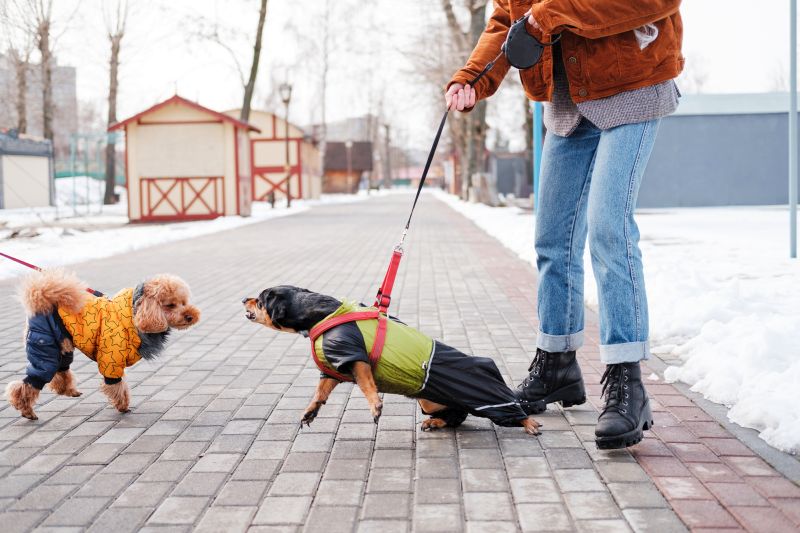How do I recognize aggression resulting from poor communication between unfamiliar dogs?
This aggression can be elicited by assertive gestures or postures from either dog. These can include placing head or feet on the back of the
How do I recognize fear-based or defensive aggression toward unfamiliar dogs?
This aggression is very common in aggressive encounters with other dogs. The diagnosis is based on the body postures and reaction of the dog when faced with another dog. However, these postures and reactions may change over time depending on the consequences of the interaction. For example, if the dog learns that the aggressive display stops encounters, the behavior tends to increase in intensity and the body postures may become more confident. Therefore, it is important not only to observe the expressions and posturing at the present time, but also those from the initial few encounters. The fearful dog will often have the tail tucked, ears back and may lean against the owner or attempt to get behind them. They may be barking at the approaching dog, while lunging and backing up at the same time. Often the dog is avoiding eye contact. This behavior may begin due to previous aggressive attacks from which the dog could not escape and sustained injury. Some dogs who have had limited or insufficient early socialization with other dogs, may lack the social skills required to interact playfully and comfortably. When multiple dogs are present, if one dog is highly aroused and unable to be calmed or controlled by the owners this dog may incite the second dog to become fearful or defensive, which ultimately leads to aggressive displays from both dogs.
Often the owner plays a role in how the dog behaves. For example, the owner may signal tension via leash tightening responses or even “corrections” that signal the dog that the approaching dog or at least the situation is of concern. In addition, if the owner is frustrated, anxious or worried about the dog’s behavior, then the dog is likely to notice the owner’s reactions and associate them with the approach of the other dog (rather than their own behaviors). This may result in a dog becoming even more defensive and aggressive. An owner that tries to calm their aggressive dog may serve to reinforce the actions the dog is engaging in at the time. Conversely, if the owner threatens or punishes the dog in an attempt to stop the behavior, this will only serve to heighten the dog’s fear and anxiety in relationship to the stimulus. Good control can help to calm the dog; owners who have their dogs restrained on a leash (especially with a choke or pinch collar) and have poor control often will have highly defensive dogs. Dogs that are restrained on a leash or tied up The diagnosis is based on the body postures and reaction of the dog when faced with another dog. are more likely to display aggression when frightened, because they cannot escape.
Words Matter: Dogs Who Demonstrate Aggressive Behavior vs Aggressive Dogs

Let’s have a quick heart-to-heart on terminology, as it may alleviate some concerns surrounding your pup’s reactiveness.
Often, people hear “dog aggression” and automatically think “aggressive dog,” when that’s rarely the case.
In reality, the vast majority of dog-aggressive canines are simply exhibiting aggressive behaviors around other dogs rather than being inherently, fundamentally aggressive.
Even the most frothy, barking dogs who lunge at the end of the leash are often sweet cuddle bugs at home on the couch with their favorite people.
This distinction between behavior and temperament is important, as canine-reactive dogs are typically loving companions who react negatively to other animals as a result of underlying anxieties.
Labeling all reactive dogs as “aggressive dogs” does the dogs and their owners a disservice.
Dog-triggered aggression is better titled “dog reactivity,” though we’ll use both terms interchangeably throughout this piece since both are commonly used.